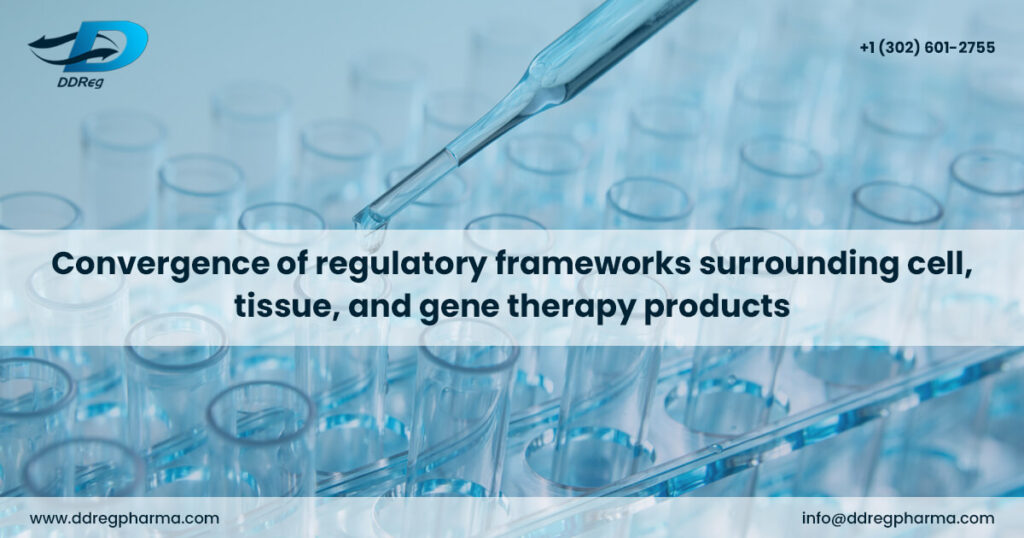Cell, tissue, or gene therapy products (CTGTPs) can contain non-viable or viable human cells or tissues, viable animal cells or tissues, or recombinant nucleic acids and are intended for use in humans to treat, prevent, or even diagnosis conditions that are associated with high treatment burden [1]. However, regulations surrounding CTGTPs vary per region as regulatory agencies around the world classify CTGTPs differently. For example, the European Medicines Agency (EMA) refers to CTGTPs as advanced therapy medicinal products (ATMPs) [2]. These differences determine the regulatory processes that the products are subjected to, including the degree of processing- right from the initial stages of raw materials. Many challenges have been identified that are predominantly related to regulations surrounding CTGTPs which would question the safety and efficacy of these products.
How are CTGTPs different to biologics? CTGTPs can be obtained directly from patients which would bypass the chances of immunogenicity or obtained from healthy humans which would increase the chances of immunogenic reactions. The main differences between biologics and CTGTPs are the final products. Proteins are the final product of biologics whereas in CTGTPs, the final product constitutes cells. Cells can continuously produce proteins whereas the proteins in the biologic are subjected to degradation. Thus, CTGTPs would have a more long-lasting or permanent treatment solution.
Regulatory convergence for CTGTPs
If CTGTPs are not used appropriately, they can cause significant harm to patients. Thus, regulatory control must be stringent for each CTGTP throughout all its stages of development to prevent serious adverse events in patients that are using the CTGTP therapy. The regulatory framework for CTGTPs have developed differently in regions around the world due to their nature. The World Health Organization (WHO) issued a draft on the ‘Considerations on Regulatory Convergence of Cell and Gene Therapy Products’ with the intent to converge, harmonize, and therefore strengthen the regulations surrounding CTGTPs. The draft highlighted the main points that a CTGTP regulatory framework should address:
- Clear definition of the categories of products that constitute CTGTPs
- Risk stratification of the products defined as CTGTPs
- Aligning the level of regulatory control based on the different risk categories
- Considering maturity level, expertise, and resources of the regulatory authority for providing oversight of CTGPs in the different risk categories
Risk-based regulatory approach
The WHO draft guidance on ‘Considerations on Regulatory Convergence of Cell and Gene Therapy Products’ categorizes CTGTPs into human cells and tissues for medical use (HCTs) and ATMPs based on the risks associated with them; HCTs are associated with lower risks whereas ATMPs require pre-market authorization. Hence, a risk-based regulatory approach is encouraged that is centered around timely identification of risk factors and preventing the transmission of infectious diseases.
Thus, as part of pre-market authorization, the need to screen cell donors is critical which is done by comparing the assessment processes and carrying out the appropriate testing which can include HIV, hepatitis B, hepatitis C, and/or other relevant infections. Facilities that gather and distribute HCTs are registered with the relevant regulatory authority and must demonstrate that all processes involved in collecting, processing, and distributing HCTs are not associated with additional risks.
Therefore, systems that trace these products from cell donor level to patient level must be implemented for effective safety monitoring. In addition to the precautions for HCTs, ATMPs require meticulous regulation for ATMP manufacturing & quality control under Good Manufacturing Practice (GMP) and non-clinical & clinical studies under Good Laboratory Practice (GLP) and Good Clinical Practice (GCP).
Current collaborative procedures
WHO encourages collaboration between regulators around the world to facilitate timely access to safe, efficacious, and high-quality CTGTPs. Various regulatory networks and programs provide the platform for the same. For example, The WHO collaborative procedure supports marketing authorization for medical products that are prequalified by WHO which have already been approved by a stringent regulatory authority (SRA). Other region-specific collaborative measures and platforms include The African Vaccine Regulatory Forum (AVAREF), Access consortium, and ASEAN Joint Assessment Procedure. These collaborative platforms and procedures are important for CTGTPs (particularly ATMPs) especially for countries that do not have experience in authorizing such products.
Conclusion
The need for convergence of regulations surrounding CTGTPs is important for harmonization of their regulatory framework. This provides more clear and better guidance for CTGTP development and streamlining marketing authorization procedures around the world to improve timely access to safe, efficacious, and high-quality CTGTPs for better treatment options while maintaining regulatory compliance.

